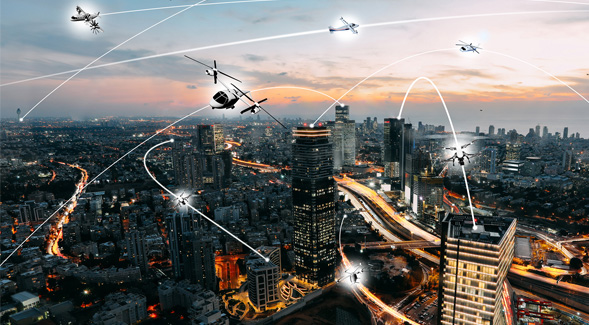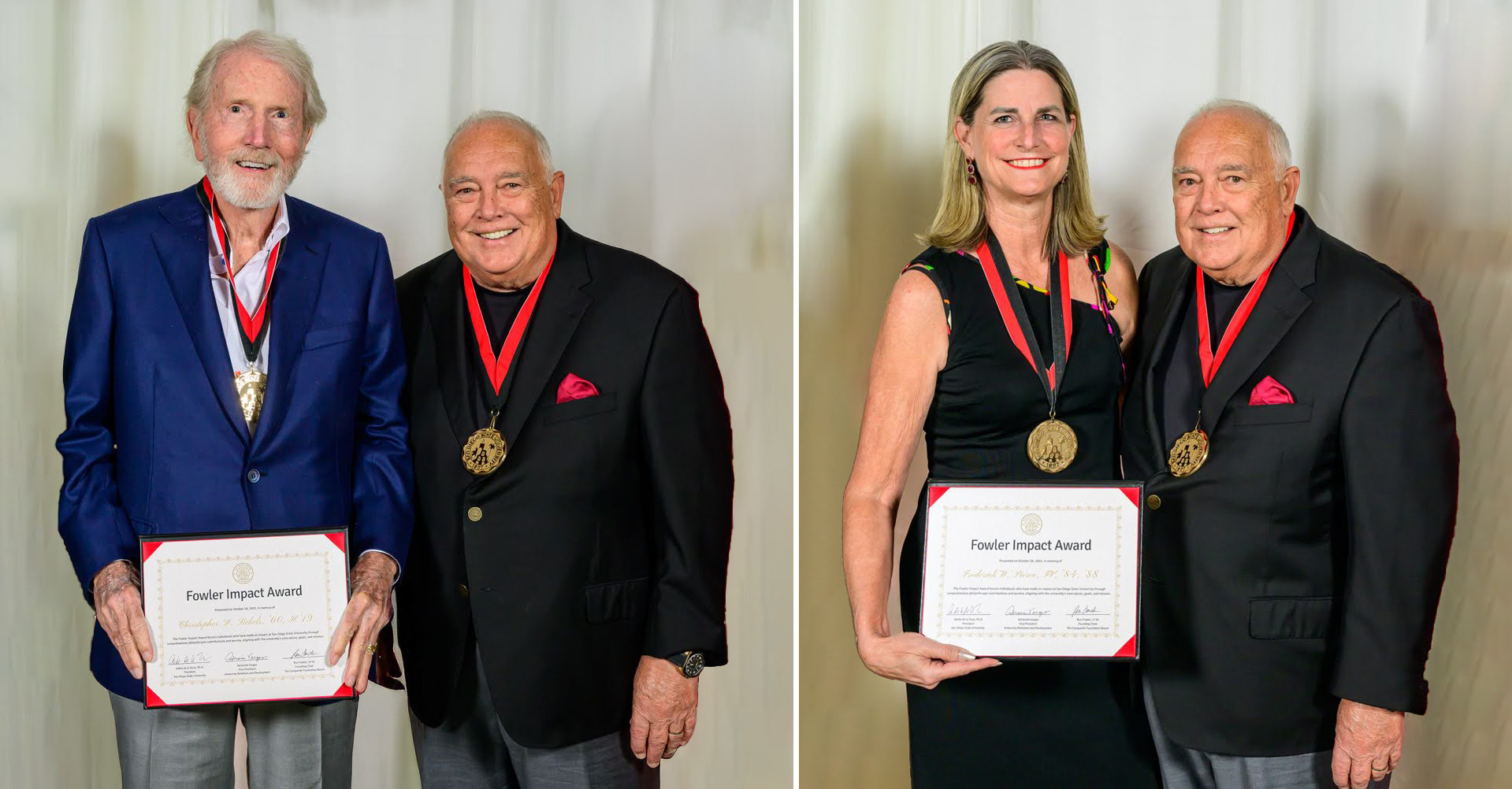Designing a Rideshare for the Sky
SDSU engineer Chris Mi will work with UC San Diego on a NASA-funded project to bring futuristic electric air taxis closer to reality.

Driving between downtown San Diego and Oceanside can take an hour or more at peak times. For commuters who don’t want to battle rush-hour traffic, hopping in a small, electric rideshare aircraft could become an option in just a few years.
Chunting Chris Mi, who leads the GATE Center for Electric Drive Transportation, is working on designing a lighter, more compact electrical drive that will power these futuristic flying taxis.
The San Diego State University professor and chair of the electrical and computer engineering department will work closely with project lead John Hwang, assistant professor of mechanical and aerospace engineering at the Jacobs School of Engineering at the University of California San Diego.
“I'm excited because this is something I wanted to work on for a long time, and this is a great opportunity that will open doors for us to do more such collaborative work in the future,” Mi said.
UC San Diego received $5.8 million from NASA to create open source computational design tools that will enable U.S. companies to more quickly develop efficient air taxi designs. It will lead a team of four other universities and two industry partners on this three-year University Leadership Initiative project. SDSU’s role is to focus on the drive that propels the electric vertical takeoff-and-landing (eVTOL) aircraft.
“This project is part of a growing field called urban air mobility, an exciting vision enabling point-to-point, on-demand air travel within densely populated areas,” Hwang said.
The goal is to develop a toolset that enables U.S. industry to rapidly develop air taxis with vertical takeoff and landing (VTOL), which would shorten commutes and revolutionize cargo delivery and emergency medicine.
While somewhat similar in size to helicopters, they will be cheaper to operate, consume less energy and fly at faster speeds, while reducing travel related carbon emissions.
“We will focus on system efficiency. When airplanes fly they generate waste energy which transforms into heat,” Mi explained. “We will work on reducing the heat generated and design heat dissipation channels to mitigate heat, and better cooling systems.”
For effective cooling, Mi plans to explore phase changing liquid material that is sprayed onto the drive surface. As it evaporates, it cools the components in the drive system. This is a new entrant in the coolant market but carries 1,000% more cooling power compared to traditional liquid coolants used in car radiators.
To make the electric drive lighter, Mi’s team will explore design optimizations and incorporating rare-earth magnetic material and a wide band gap power device — something used commonly in computers and household appliances to regulate the flow of power through the device.
Mi has spent the bulk of his 30-year career focused primarily on renewable energy, an interest that harks back to his childhood growing up in a remote village in China’s Anhui Province.
There was no electricity until the 1990s in the village, and he recalls using oil lamps and talking to his father about installing a windmill in the village. The idea was popular but funds were an issue, so it didn’t happen, but it led to an abiding interest in the difference that renewable energy could make in people’s lives.
His lab researches ways to improve batteries for electric vehicles (EV) and wireless power transfer. He is also looking at options for a second life for retired EV batteries as an energy storage resource, in a project funded by the California Energy Commission.


